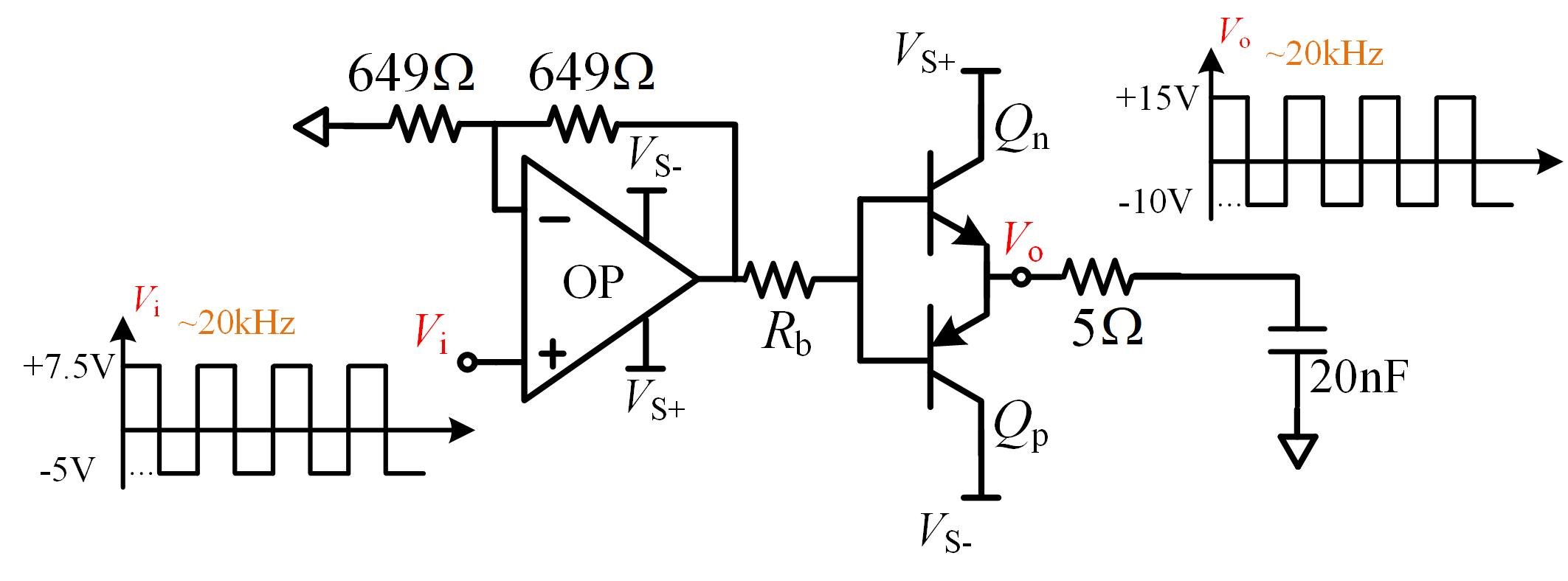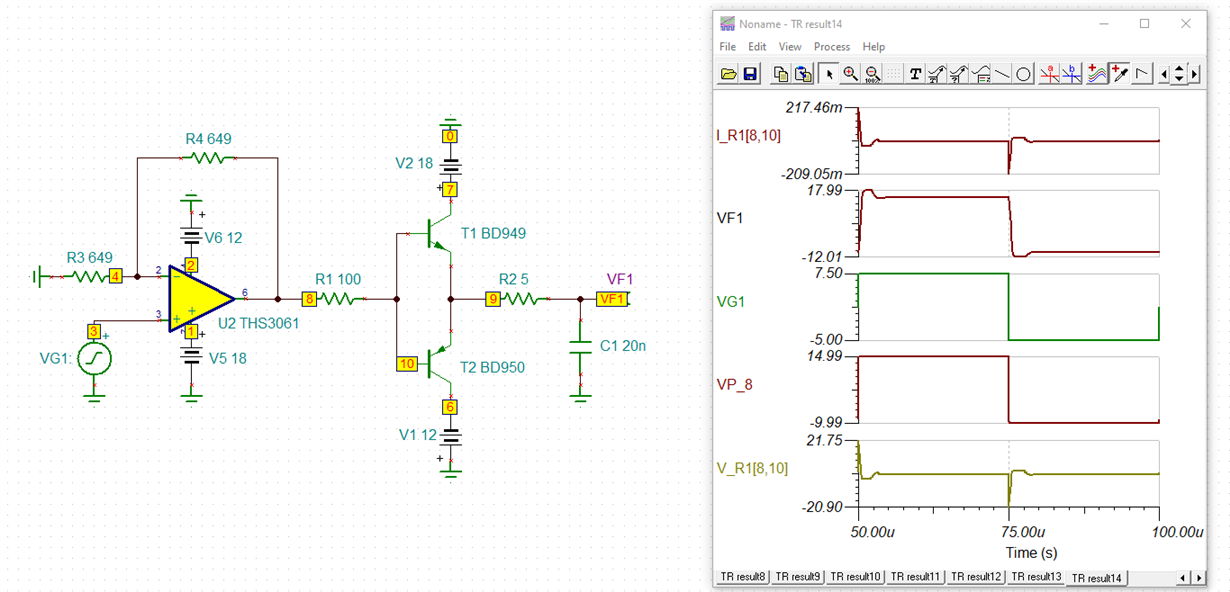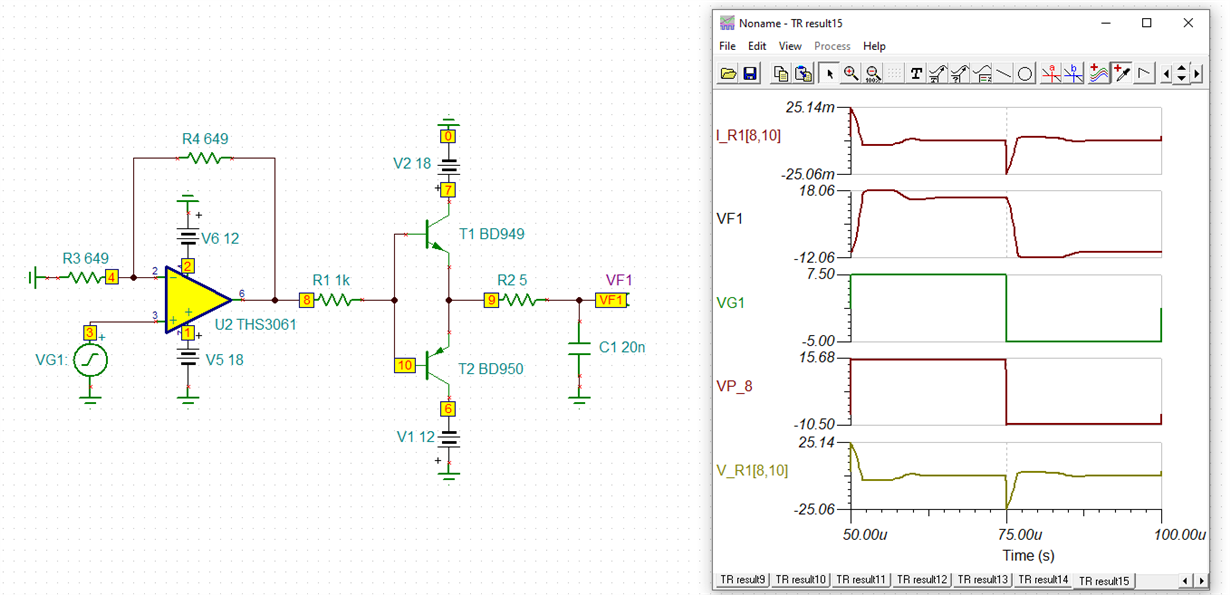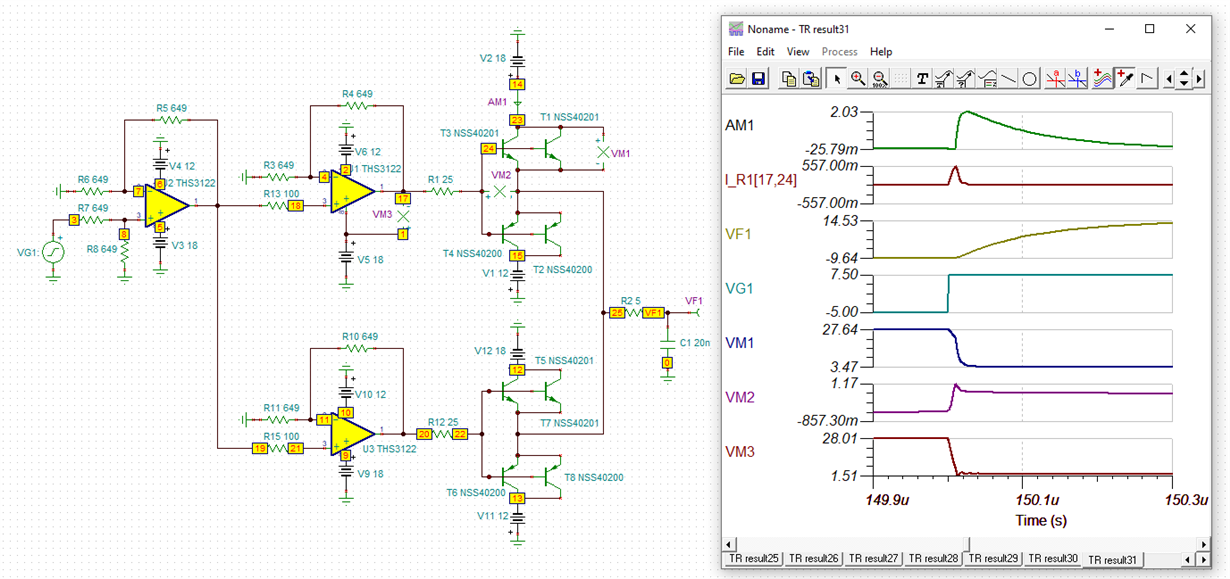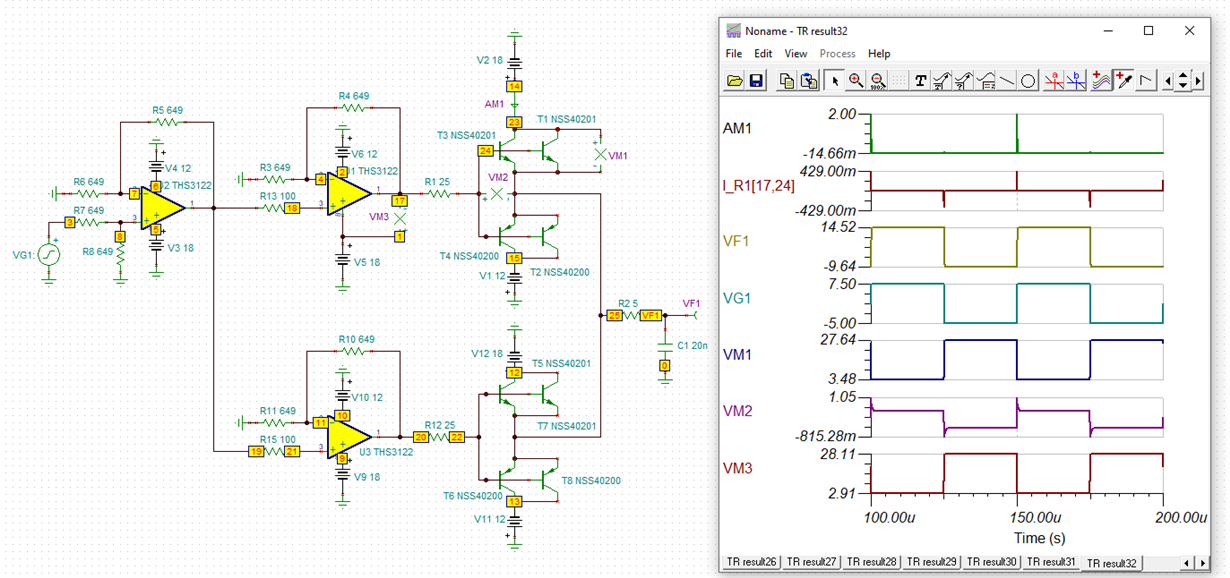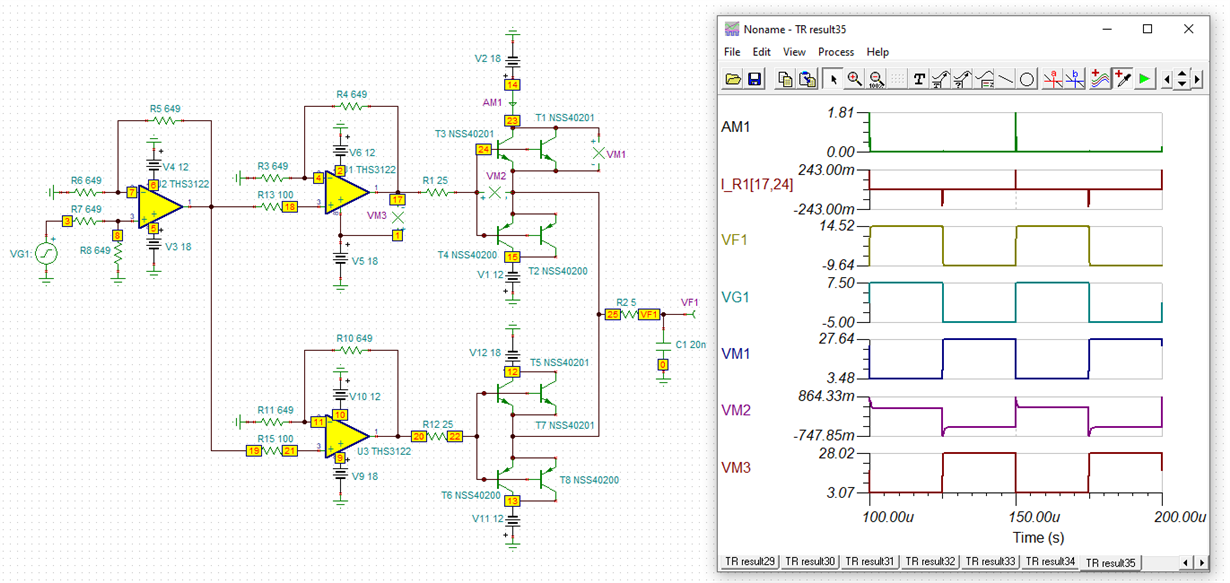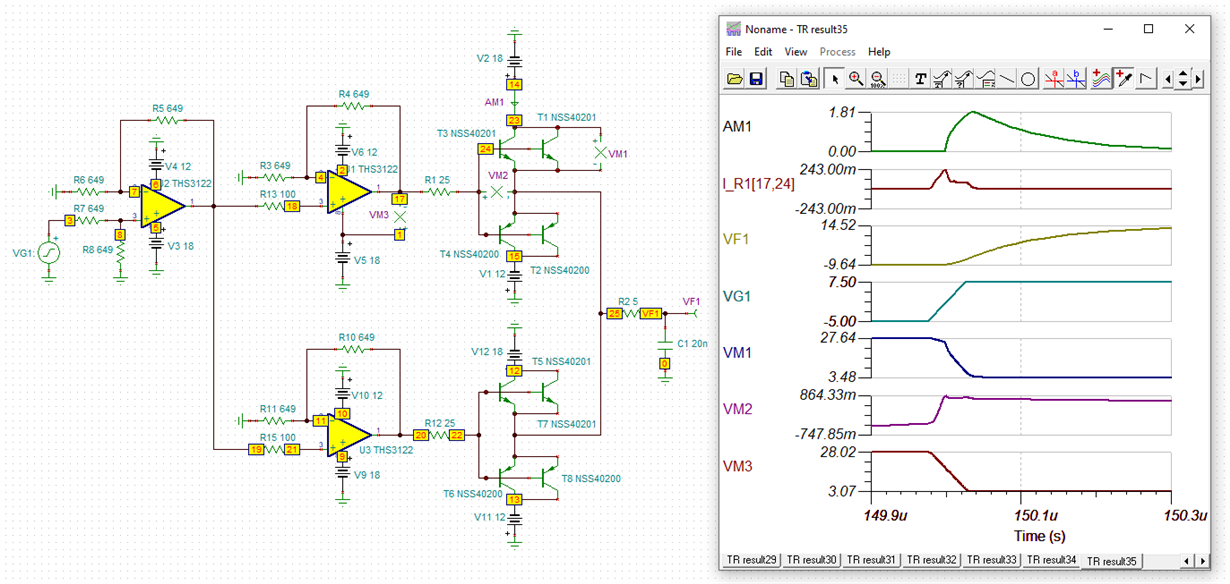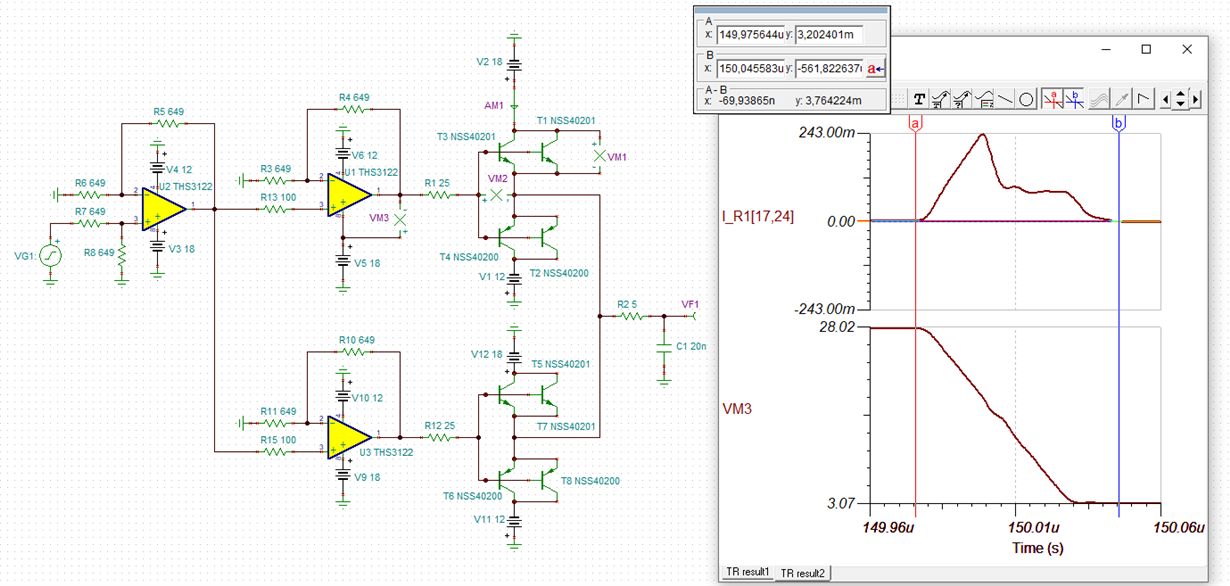Other Parts Discussed in Thread: THS3061, THS3121, TINA-TI, THS3122
Dear TI expert,
I use THS3062 to design the ckt as below. It is configured with gain=2. The amp is fed with periodic input of 20kHz frequency, with amplitudes of -5V and +7.5V. The output is then followed by a push-pull to amplify its current to drive a first-order RC ckt. The RC ckt has parameters of 5R and 20nF. Since the op amp has a gain of 2, the RC ckt is driven with a square waveform of amplitudes -10V and +15V.
Note that the op amp is not rail-to-rail, the op amp's supplies Vs+, Vs- are -12V and +18V respectively.
I worry that the op amp or the push-pulls (actually 4 in parallel with each other) may have too much power and then suffer from over heat or even damage. Hence, can you please show me how I can calculate the power losses of op amp and push pull in the ckt shown below.
Best Regards
Yatao


